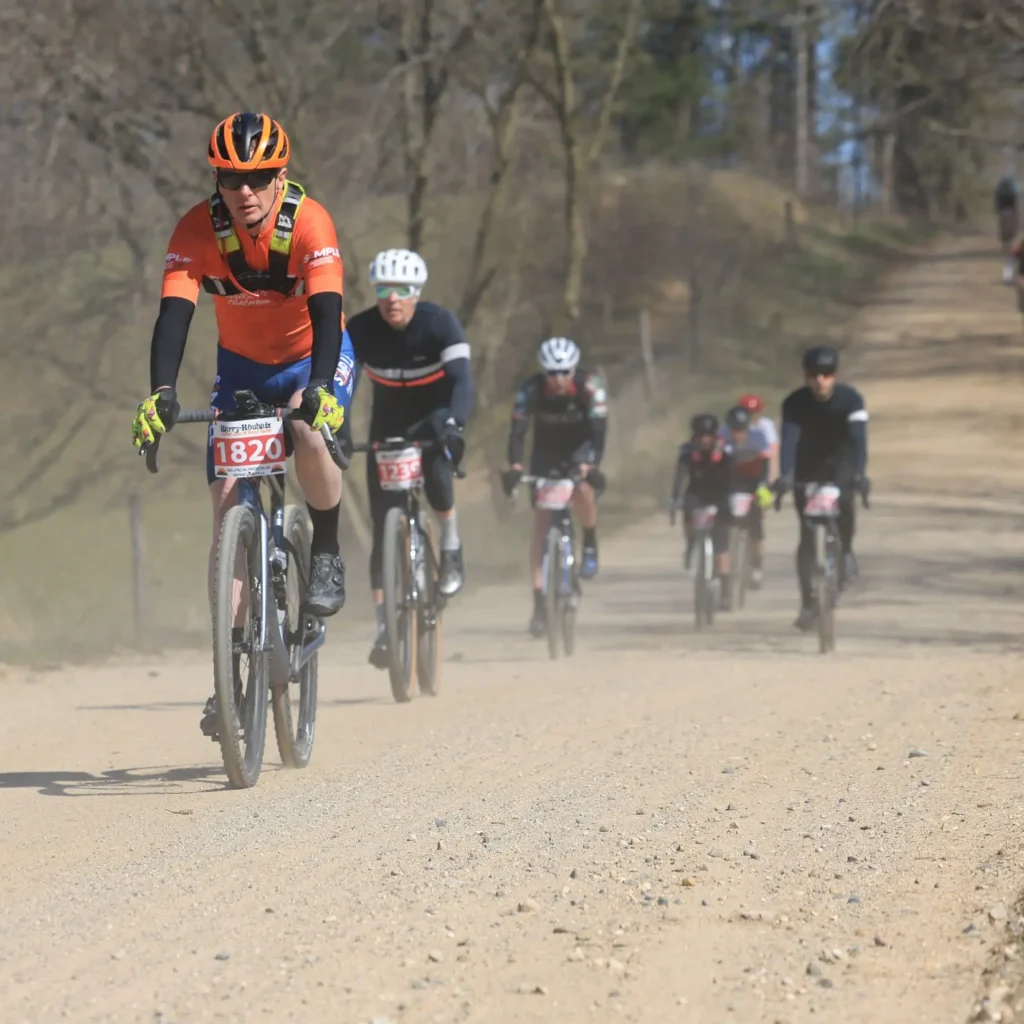Five Key Principles of Winter Base Training To Keep You Fresh and Motivated
It can be a challenge during the winter months (in most of the northern hemisphere) to get in long, endurance miles.
But those miles, whether you’re running or riding, are the base training you need for the rest of your training season.
You still need some intensity, strength training, and yoga, but it’s critical that the majority of the training you do as an everyday cyclist and runner be slow and easy.
This time of year is known as the base training phase of your training year.
The challenge of the base training in the northern hemisphere is that it’s often “too cold” outside to do long workouts, and it can be pretty boring to do long workouts indoors.
(I put “too cold” in quotes because it’s a relative term for many people!)
Here are five principles to consider for your winter base training.

1. Aerobic development with base training
Endurance, both on the bike and for running, needs to be the majority of your training.
This means slow easy miles where you’re paying primary attention to your heart rate, which should be in your zone 1 and zone 2 in a five-zone model.
Typically, your heart rate will be below 135 on average.
There are three main goals in doing the endurance training:
- Improving your heart’s stroke volume by increasing the size of your heart and its capacity to pump blood to your muscles.
- Increasing the size and number of your mitochondria, which, in turn, provide the energy you need to race next spring and summer.
- Improving your body’s capacity to burn fat as a fuel.
There are other benefits for the endurance rides including increased capillarization, but those three are the ones we’re most interested in to improve your performance.
2. Volume and intensity progression
Gradual progression in training volume and intensity is crucial to avoid overtraining and reduce the risk of injury.
The 80/20 principle, where approximately 80% of training is at low intensity and 20% at moderate to high intensity, is often cited.
- Focus on low-intensity training, primarily in heart rate zones 1 and 2 (60-75% of maximum heart rate).
- Use a heart rate monitor or power meter to track your intensity and ensure you’re training in the desired zones.
- Gradually incorporate higher intensity intervals as your fitness progresses, while maintaining the majority of your training in low-intensity zones.
So it’s important to maintain some intensity throughout the base period.
For example, if you race primarily gravel events that require a lot of threshold power, you may want to do some VO2max blocks in the winter and then do threshold in the build and race preparation phases.
Similiarly, if you race crits in the summer or cross in the fall, you might spend more time this winter doing threshold intervals to build your Critical Power (FTP).
Work on your weaknesses.
Remember, though, that all the intensity you do requires more recovery time since more intensity, including tempo work, builds exponentially more fatigue.
Make sure you’re eating enough to fuel your workouts as well.
3. Individualization of base training programs
Base training programs should be individualized based on an athlete’s current fitness level, goals, and specific needs.
Periodization, or dividing the training year into distinct phases, is commonly used to structure base training.
- Begin with a manageable volume, allowing your body to adapt to the training load.
- Gradually increase the duration of your endurance rides or runs by 10-15% each week to avoid overtraining.
- Incorporate variety in your training, including different terrains, routes, and elevations.
You can can mix it up and do some tempo and cadence work during your endurance training.
This means you can shorten the long days by adding some tempo intervals (slightly harder than endurance training).
You can also mix up the cycling portion of your training by increasing or decreasing your cadence to change up the pace.
If you are on Zwift or other platform, you can do a specific endurance workout as well.
In general, increasing the intensity a bit is fine to create enough stress with less time.
However, you lose out, for example, on some of the fat-burning when you increase the pace.
On Athletica, you can choose the Workout Wizard with options to get similar training stress with a different workout.
4. Consistency with base training
Consistency in training is key for building and maintaining the aerobic base.
Long-term adherence to a structured training plan is associated with better performance outcomes.
- Aim for at least 3-5 training sessions per week to maintain and improve your aerobic base.
- Prioritize consistency over intensity, especially during the early stages of base training.
- Allow for adequate rest and recovery between sessions to prevent overtraining and injuries.
5. Cross-Training: Take the opportunity to change up your training
During the base season, you can and probably should mix up your bike or run training with exercise that is totally different.
For example, cross country skiing is a great alternative, especially for an intensity day.
Many of my junior cyclists go downhill skiing or snowboarding during the winter, which is a great break from the regular training.
Spin classes, swimming, or run-specific classes at your local gym are also great ways to do some cross-training to keep fresh and ready to go for your regular training.
Whenever you’re adding some different class or activity, keep your long-term goals in mind and remember that these activities will help keep you fresh and excited to be training.
Strength training and yoga build full-body strength in base period
This is the time of year when we rebuild our full-body strength and mobility.
For me as a coach, the two best ways are through strength training and yoga.
I tell my athletes to get inthe gym several times a week for full-body compound lifts like deadlifts, pullups, dumbbell bench presses, and kettlebell swings.
I also add yoga to my clients’ schedule so they do a 30 to 45-minute session several times a week.
Remember, base training is a process, not a race. Be patient, consistent, and listen to your body to build a solid foundation for your cycling or running goals.
Three things to know about keeping base training fresh and interesting
- Mix up your endurance rides and run by changing pace, cadence, and courses.
- Mix up your training schedule by adding different sports like cross-country skiing.
- Add in strength training and yoga to build full-body strength and mobility.
Need more?
Getting your winter base training dialed in correctly can be a challenge.
Custom coaching or Athletica.AI can be great tools to help get you healthy, strong, and fast for your upcoming season.
GET A FREE Core Strength and Stability training video when you opt-in to receive my weekly blog posts about what works in endurance sports.
SIGN UP FOR A Virtual Coffee so we can discuss your goals, ask questions, and talk about making your endurance training more effective, fun, and Simple.
Paul Warloski is a:
- USA Cycling Level 2 Coach
- RRCA Running Coach
- Training Peaks Level 2 Coach
- RYT-200 Yoga Instructor
- Certified Personal Trainer




